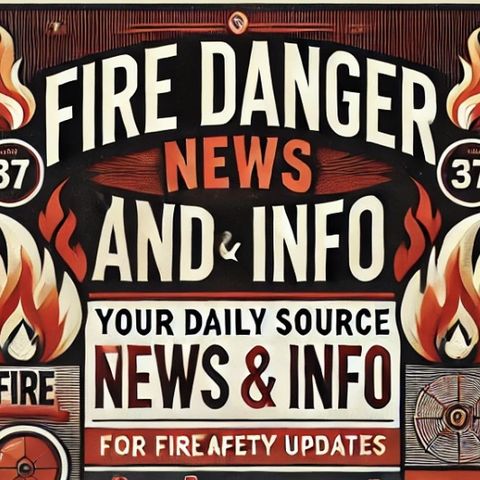Pioneering Wildfire Science: USGS Leads the Charge in Comprehensive Fire Management Solutions

Download and listen anywhere
Download your favorite episodes and enjoy them, wherever you are! Sign up or log in now to access offline listening.
Pioneering Wildfire Science: USGS Leads the Charge in Comprehensive Fire Management Solutions
This is an automatically generated transcript. Please note that complete accuracy is not guaranteed.
Description
Wildfires have increasingly become a persistent threat across the western United States, amplifying the need for advanced fire science to aid in effective management and mitigation. The U.S. Geological Survey...
show moreOne of the primary roles of USGS in wildfire management is the development and deployment of cutting-edge technologies and methodologies to predict, monitor, and assess wildfires. By leveraging remote sensing technology and geographic information systems (GIS), USGS scientists can create detailed maps and models that forecast fire behavior under various environmental conditions. These tools aid in understanding where fires are most likely to start, how they spread, and what landscapes are at greatest risk, enabling more strategic planning for resource allocation and emergency response.
Another critical area of focus for the USGS is post-fire landscape recovery. Understanding soil and vegetation changes after a fire is essential for predicting long-term ecological impacts and planning remediation efforts. USGS research in this area helps land managers decide on the best techniques for restoring damaged ecosystems, reducing the risk of erosion, and preventing future fire occurrences. For example, studies of plant resprouting and soil stabilization provide insights that guide reforestation and rehabilitation projects.
The USGS also plays a vital role in fire frequency and intensity research. By examining historical fire patterns and integrating climate change projections, scientists can identify trends that may lead to increased wildfire activity. This information is crucial for communities in the western U.S., as it helps them prepare for potential threats and implement proactive measures, such as creating defensible spaces, hardening structures against fire, and developing advanced firefighting strategies.
Additionally, the USGS collaborates with various federal, state, and local agencies, sharing its findings and expertise to support unified fire management efforts. This collaboration ensures that the latest scientific advancements are integrated into policy-making and on-the-ground practices, ultimately improving resilience against wildfires.
For those interested in exploring these advancements further, the USGS Wildland Fire Science webpage offers a wealth of resources and updates on the ongoing contributions of USGS science to this critical field. Through continued research and innovation, USGS remains dedicated to enhancing our understanding and response to wildfires, making a significant difference in safeguarding both natural landscapes and human communities from the increasingly severe threat of wildfires out west.
Information
| Author | QP-4 |
| Organization | William Corbin |
| Website | - |
| Tags |
Copyright 2024 - Spreaker Inc. an iHeartMedia Company

Comments